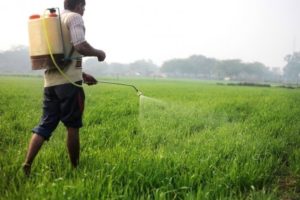 The unprecedented increase in international prices of complex fertilizers primarily di-ammonium phosphate (DAP) as well as raw materials – phosphoric acid and ammonia used in their production – has sent shock waves through the industry. At the beginning of the year, when the prices were up 60 per cent to 70 per cent over last years’ level, the government was in deep slumber. Even as the cost of supplying a bag (50 kg) of DAP went up from Rs 1,700 last year to Rs 2,400, it kept the subsidy unchanged at the last years’ level of Rs 500.
The unprecedented increase in international prices of complex fertilizers primarily di-ammonium phosphate (DAP) as well as raw materials – phosphoric acid and ammonia used in their production – has sent shock waves through the industry. At the beginning of the year, when the prices were up 60 per cent to 70 per cent over last years’ level, the government was in deep slumber. Even as the cost of supplying a bag (50 kg) of DAP went up from Rs 1,700 last year to Rs 2,400, it kept the subsidy unchanged at the last years’ level of Rs 500.
As a result, its maximum retail price (MRP) increased from Rs 1,200 to Rs 1,900 inviting farmers’ wrath. The Centre responded by notifying on May 19, hike in subsidy to Rs 1,200 (subsidy on other complex fertilizers ‘21’ was also increased). Meanwhile, the international prices have scaled to new highs,
levels last seen during 2008-09. The current price of imported DAP is $630 per tonne, $300 more than last year. The price of phosphoric acid is around $1000 per tonne, up by $375 while that of ammonia is US$670 per tonne, higher by $470. The price of muriate of potash (MOP) at $400 per tonne is $170 higher.
This time around, the government swung into corrective mode well in advance. Early October, it announced a further hike in subsidy on DAP by Rs 438 per bag (subsidy on three other commonly used complexes — 12:32:16, 10:26:26, 20:20:0:13 was also increased by Rs 100 per bag each) to offset the escalation during the third quarter.
Yet, its price continues to be disproportionately high when compared to urea. Currently, at Rs 1200 per bag, the price of DAP is 4.5 times that of urea (Rs 268 per bag) whereas for maintaining the desired balance in NPK use ratio, the former should not be more than twice the latter.
The Union government has the levers to set MRP of both urea and complex P&K fertilizers at the intended level. While it exercises direct control on the former (albeit under the Fertilizer Control Order or FCO), as for the latter which are not under control, it can achieve the same result by adjusting the subsidy rate. Yet, its actions are leading to a serious imbalance in the price ratio. The blatant discrimination against P&K fertilizers can be seen in other areas also.
On complex fertilisers, the government reimburses the freight cost only towards primary movement (from the plant site/port to the unloading rake point) whereas, on urea, secondary movement cost up to the retail point is also given under a ‘uniform freight policy’. Moreover, while urea producers get priority in the allocation of cheaper domestic natural gas (key fuel used to make ammonia/urea), P&K manufacturers are left to fend for themselves.
Imbalance in use
All these actions put together have led to an increasing imbalance in fertilizer use. On an all-India basis, currently, the NPK use ratio is 6.7:2.4:1 against an ideal 4:2:1 with the attendant adverse effect on crop yield, health of soil and people. Being a source of nutrients/food for the plants, all fertilizer types are equally important.
Prior to the 1990s, the government used to control MRP of all fertilizers and reimburse the excess of the cost over it as subsidy. The policy dispensation was uniform for all. In the early 1990s, while sanctioning assistance to bail out the Indian economy (then in the doldrums), the International Monetary Fund/World Bank had insisted amongst others on ‘reforming our fertilizer subsidy regime’. To satisfy them, the then government decontrolled P&K fertilizers even as it continued with the subsisting regime for urea.
Having got the tag of ‘decontrol’ which connotes that the stakeholders operate under a market-driven environment, the bureaucrats have taken the P&K sector for granted and refrained from providing help even when they are in dire need (the current year is an exception). On the other hand, urea on which the ‘control’ tag has continued all along has always been the darling of the officials.
Caught in this mindset, they are unable to see the dangerous fallout of persisting imbalance in prices and other forms of discrimination against P&K fertilizers.
In the current fiscal, the government is able to salvage the P&K sector as a very liberal fiscal deficit target of 6.8 per cent of GDP (Rs 15,00,000 crore in absolute terms) helps in providing the subsidy cushion (the rate hikes of May/October will require about Rs 30,000 crore in addition to the budget allocation of Rs 21,000 crore). This leeway won’t be available when it returns to fiscal tightening. Then, the NPK use ratio could even deteriorate beyond the current 6.7:2.4:1.
To get things back on track, the Centre should go for a ‘uniform’ policy giving all fertilizers a level playing field. At the same time, it should galvanise efforts to reduce current heavy reliance on imports – Phosphate: 90 per cent; Potash: 100 per cent; Gas: 50 per cent which makes the industry vulnerable to rising international prices.
(The writer is a Delhi-based policy analyst)
https://www.deccanherald.com/opinion/in-perspective/policy-flaws-in-fertiliser-sector-1051518.html